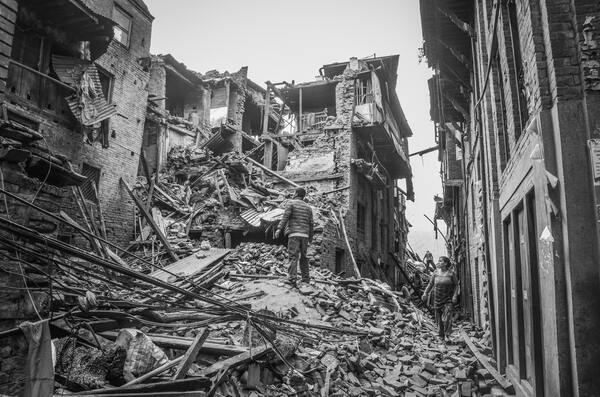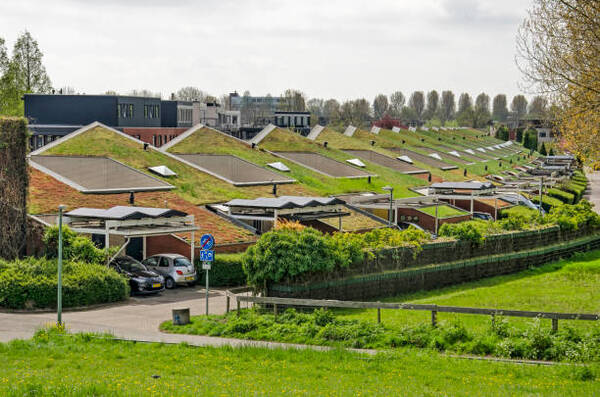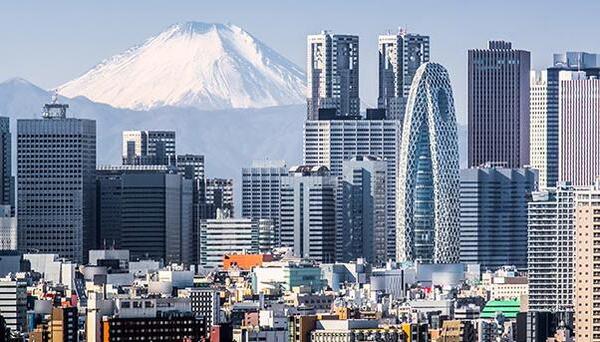.jpg)
Building Resilience: The Imperative for Disaster-Resilient Buildings
In an era of increasing climate volatility and natural disasters, the construction industry finds itself at a critical crossroads, demanding a profound paradigm shift. The very essence of constructing buildings has evolved from mere functional endeavors to becoming a vital component of global sustainability and human safety. Today, building structures that can withstand the unpredictable and often devastating forces of nature is no longer a choice; it is an urgent and non-negotiable necessity.
This article delves into the rapidly escalating importance of constructing resilient and disaster-resilient buildings, illuminating the innovative materials and cutting-edge design strategies architects and engineers are adapting to meet this new imperative. Moreover, it shares compelling narratives of communities that have not only endured catastrophic events but have also demonstrated remarkable resilience and determination in rebuilding their homes and cities, with resilience as the guiding principle. These stories serve as beacons of hope and inspiration in the face of adversity, underscoring the power of human ingenuity and resilience in an ever-changing world.
.jpg)
The Rising Threat of Natural Disasters
In our rapidly changing world, the specter of natural disasters looms larger than ever before, primarily due to the inexorable advance of climate change. These events, characterized by their increasing severity and frequency, include hurricanes, earthquakes, floods, and wildfires, and they have cast a shadow of uncertainty over communities worldwide. The catastrophic consequences of these disasters are a grim reminder of the urgent need to embrace resilient building practices that prioritize human safety and the protection of property.
Hurricanes and Tropical Storms: Coastal communities situated in hurricane-prone regions face the full force of these tempestuous storms. The formidable combination of high winds, torrential rainfall, and storm surges poses a grave threat to conventional structures. Recent hurricanes, such as Katrina in 2005 and Harvey in 2017, serve as stark, indelible reminders of the vital importance of constructing buildings capable of withstanding nature's fury. These destructive events have left in their wake countless lives lost and extensive property damage, underscoring the urgent need for resilient building solutions.
Earthquakes: Regions located near tectonic plate boundaries, such as California's San Andreas Fault, live under the constant threat of earthquakes. These seismic events, known for their sudden and violent shaking of the Earth's crust, can unleash widespread destruction when buildings are not designed to withstand their formidable force. Japan, perched precariously on the Pacific Ring of Fire, stands as a shining example of a place where earthquake-resilient construction is not a luxury but a fundamental necessity. The country's commitment to innovative engineering and construction techniques has proven invaluable in minimizing the devastation caused by earthquakes.

Floods: The convergence of rising sea levels and increasingly torrential rainfall has led to a disturbing rise in flooding events on a global scale. New Orleans' harrowing ordeal during Hurricane Katrina laid bare the vulnerability of cities positioned below sea level. In Bangladesh, where monsoon rains regularly result in catastrophic flooding, the implementation of resilient building practices has become imperative for safeguarding lives and communities. These events serve as poignant reminders that in flood-prone areas, resilient building solutions are the only path forward.
Wildfires: The menace of wildfires has become more pervasive and menacing in recent years, posing a significant threat to homes and communities in regions like California, Australia, and parts of Europe. These infernos, fueled by a combination of prolonged droughts and increased temperatures, have devastated landscapes and urban areas alike. Resilient building practices, which incorporate fire-resistant materials and designs, are now paramount for protecting lives and property in these fire-prone regions. The lessons learned from these catastrophic events emphasize the need for proactive measures to combat the growing wildfire threat.
Materials and Design Innovations for Resilience
In the ongoing battle against the mounting threat of natural disasters, architects and engineers have embarked on a journey of relentless innovation, pushing the boundaries of what is possible in building design and materials to enhance resilience. These visionary efforts are not merely addressing the current challenges but are also forging a path toward a more secure and sustainable future.
Let's delve into some of these groundbreaking advancements:
Seismic-Resistant Design: In regions susceptible to earthquakes, engineers have pioneered seismic-resistant designs that have revolutionized building construction. Among the remarkable innovations are base isolators, which allow a building to move independently of the ground motion during an earthquake, thereby dissipating the destructive forces. Dampers, capable of absorbing seismic energy, have become another cornerstone in earthquake resilience. Furthermore, modern construction techniques frequently incorporate flexible materials and reinforcements that enhance a building's capacity to withstand ground shaking, ensuring greater safety for occupants and reducing damage.
Flood-Resistant Construction: To combat the persistent threat of flooding, designers are integrating a suite of innovative features into the architecture of buildings in flood-prone areas. Elevated foundations elevate structures above floodwaters, while watertight doors and flood barriers form critical lines of defense against rising waters. Beyond these structural elements, permeable paving and green infrastructure play pivotal roles in flood resilience by managing excess rainwater and mitigating the impact of heavy storms, effectively safeguarding communities and their properties.
Fire-Resistant Materials: In regions vulnerable to wildfires, architects and builders are increasingly opting for fire-resistant materials that can significantly enhance a building's chances of surviving a wildfire. Concrete and fiber cement siding, engineered for its resistance to flames, helps slow down the spread of fire and reduces the risk of catastrophic property loss. This choice of materials underscores the critical importance of proactive measures in regions where wildfires pose a persistent threat.
Wind-Resistant Structures: In the face of hurricanes and typhoons, buildings are being designed with reinforced roofing, impact-resistant windows, and sturdy structural frames. Architects employ aerodynamic designs and materials engineered to withstand high winds, ensuring that structures can endure even the most violent storms. These innovations not only protect property but also safeguard the lives of those within, emphasizing the holistic approach to disaster resilience.

Green Roofing: Green roofs not only contribute to energy efficiency but also enhance a building's resilience. These living roofs, adorned with vegetation, are multifunctional. They absorb rainwater, reducing the risk of flooding, and mitigating the urban heat island effect. Furthermore, they provide insulation, enhancing the building's ability to maintain stable temperatures during extreme weather events. The incorporation of green roofing thus exemplifies a holistic approach to resilience that promotes sustainability alongside disaster preparedness.
Advanced Insulation and Ventilation: Climate-appropriate insulation and efficient ventilation systems play a pivotal role in ensuring the comfort and safety of building occupants during extreme weather events. Proper insulation helps maintain comfortable temperatures in both hot and cold conditions, while efficient ventilation ensures a constant supply of fresh air. These elements are indispensable in enabling occupants to safely shelter in place during disasters and underline the importance of considering human well-being in resilient building designs.
Energy and Water Self-Sufficiency: Disaster-resilient buildings are increasingly embracing energy and water self-sufficiency. This is achieved through the integration of renewable energy sources, such as solar panels and wind turbines, which not only reduce a building's environmental footprint but also ensure uninterrupted power generation during disasters. Rainwater harvesting and water purification systems further enhance water resilience, providing access to a reliable source of clean water when it's needed most. These self-sufficient technologies exemplify the fusion of environmental consciousness and disaster preparedness, creating resilient structures that contribute to a sustainable future.
Stories of Resilience in Action
While the threat of natural disasters is real and growing, communities around the world have demonstrated incredible resilience in the face of adversity.
These stories stand as a testament to the indomitable human spirit and the power of building with resilience in mind:
The Resilience of New Orleans: Following the devastation of Hurricane Katrina, New Orleans embarked on an ambitious journey to rebuild with resilience as the central focus. The city improved its levees, invested in stronger infrastructure, and implemented building codes that required homes to be elevated above the floodplain. The result is a more resilient Crescent City, better equipped to withstand future storms.

Japan's Earthquake-Resilient Cities: Japan, located in a seismically active region, has long been a pioneer in earthquake-resistant construction. The Great East Japan Earthquake of 2011 triggered a massive tsunami, but the country's advanced building designs and early warning systems saved countless lives. Japan continues to innovate, constructing even more resilient structures to protect its population.
Resilient Housing in Bangladesh: Bangladesh is no stranger to annual monsoon floods. To address this ongoing threat, organizations like BRAC have been constructing flood-resistant houses in rural areas. These elevated, resilient homes provide shelter and safety for families during the monsoon season.
Australia's Bushfire-Resilient Homes: In the face of raging bushfires, Australians have embraced fire-resistant building practices. Many homes now feature fire-resistant materials, ember-proof screens, and well-maintained firebreaks to protect against wildfires. These measures have saved homes and lives during the country's recent bushfire crises.
Conclusion
The urgent need for resilient and disaster-resilient buildings has become evident in a world grappling with climate change and its devastating consequences. Architects, engineers, and communities are rising to the challenge, embracing innovative materials and design strategies to create structures that can withstand nature's fury.
The stories of resilience showcased here inspire hope and serve as powerful examples of what can be achieved when resilience is at the heart of building practices. As we continue to confront the ever-growing threat of natural disasters, the construction industry's commitment to resilience will play a pivotal role in safeguarding lives, homes, and our planet for generations to come. Building resilience is not just a choice; it's a responsibility we all share in shaping a more resilient future.
check https://app.bidlight.com for how BidLight can help you estimate your BIM model!